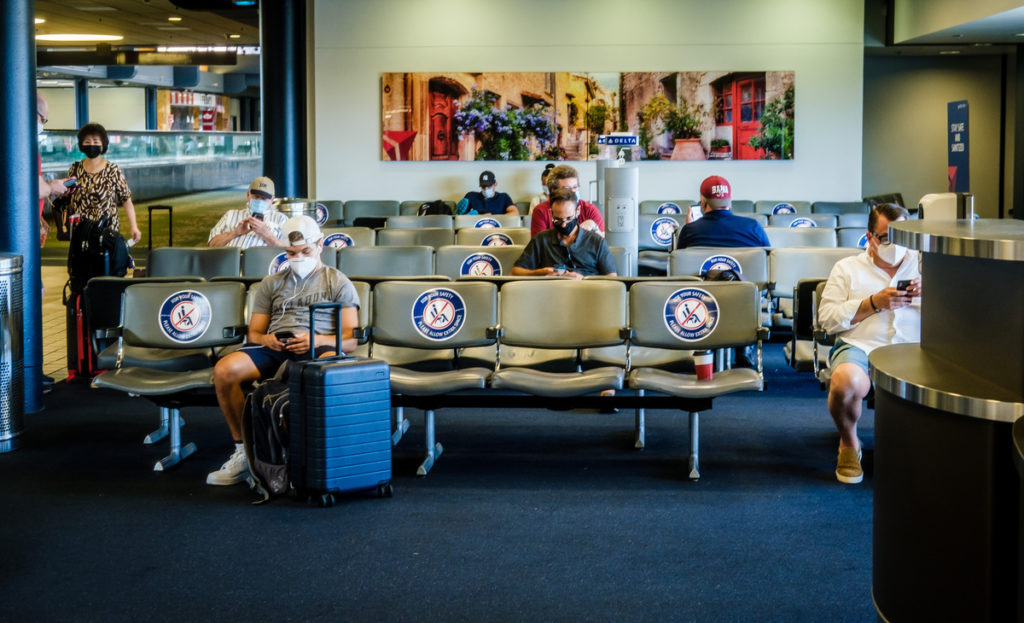State-Mandated Traveler Forms Aim to Combat COVID Spread
Personal data, quarantine guidelines part of effort to get virus under control; airlines push compliance
By Stacey Federoff
Published August 10, 2020
Read Time: 3 mins
Travelers headed for five U.S. states must now fill out health forms seeking contact information and other data as public officials continue to seek ways to limit the spread of the COVID-19 virus.
The forms are given to anyone, including air travelers, entering Alaska, Connecticut, Hawaii, Massachusetts and New York for longer than 24 hours.
They are intended to identify people traveling from a state “that has a significant degree of community-wide spread of COVID-19,” according to New York’s form, and emphasize 14-day quarantines for anyone traveling from 22 restricted states.
In New York, the document started out as voluntary in late June, then became mandatory July 13, with a $2,000 fine attached.
In announcing use of the form in New York, Gov. Andrew Cuomo said a quarantine order by itself wasn’t enough.
“New York’s success in fighting the COVID-19 virus is under two threats: lack of compliance and the virus coming to New York from other states with increasing infection rates,” he said. “We have already implemented a quarantine order for travelers coming in from states with the highest infection rates, but we are experiencing non-compliance with the order that can lead to outbreaks and threaten the tremendous progress we’ve already made.”
Airlines step up
Airlines pledged to use pre-flight emails, pre-flight announcements, in-flight announcements and other methods to make sure passengers were aware of the required traveler health form, according to the governor’s office.
“U.S. carriers are making every effort to cooperate and be good partners as we all work to protect the wellbeing of the traveling public,” according to a spokesperson with Airlines for America (A4A), the industry trade organization representing several major U.S. airlines.
In late June, its member carriers—Alaska Airlines, American Airlines, Delta Air Lines, Hawaiian Airlines, JetBlue Airways, Southwest Airlines and United Airlines—began requiring passengers to complete a health acknowledgement during the check-in process.

A number of airlines are requiring travelers to complete health forms during their check-in process, prior to boarding the flight. (Photo by Beth Hollerich)
The policies mandate that passengers wear face coverings, are not experiencing any symptoms of illness, and have not had close contact with someone who tested positive or had symptoms of COVID-19. Passengers who fail to or refuse to complete the acknowledgement can be deemed unfit to travel, according to A4A, with each carrier resolving the situation in accordance to its own policies.
Hierarchy of controls
Time will tell if these forms prove effective and how the information is used to combat the virus, said one expert.
“It’s going to help them, I think, develop their policies,” said Paloma Beamer, an exposure scientist and faculty member at the University of Arizona’s Mel & Enid Zuckerman College of Public Health. “Because minimizing potentially infectious people in the general public … that form is probably helping them with that.”
An engineer by trade, Beamer studies how people can become exposed to a disease and how to intervene or prevent those exposures from happening.
In a piece first published by The Conversation, Beamer and her colleague Kacey Ernst wrote about advice for air travel and minimizing risks to spread COVID-19.
They explained the methodology known as the hierarchy of controls used by the U.S. Occupational Safety and Health Administration and the National Institute for Occupational Safety and Health.
The first step is elimination. A quarantine would be considered an elimination control.
“If you can eliminate the hazard, that’s going to be your most effective control to mitigate exposure,” Beamer said. “The hazard in this whole situation is infectious people, and what makes this virus a particularly difficult disease outbreak is that … there seems to be a lot of spread from asymptomatic infectious people.”
If eliminating isn’t possible, “replacing” the hazard is the next best method, Beamer said. Next steps are creating engineering controls to isolate people from the hazard, such as ventilation system improvements. Then, administrative controls can be used to change the way people interact with the hazard, such as floor decals for social distancing or easy access to hand sanitizing stations.
The last control is protection from the hazard using personal protective equipment, she said.
In the short term, states hope the forms will help eliminate the hazard of infectious people while they continue considering long-term strategies.
“There’s so much that’s unknown that there could be a lot of very useful data to be mined, if they have the capacity to link it with their contact tracing operations and use it,” Beamer said.
Watch
This Next
Read
This Next





